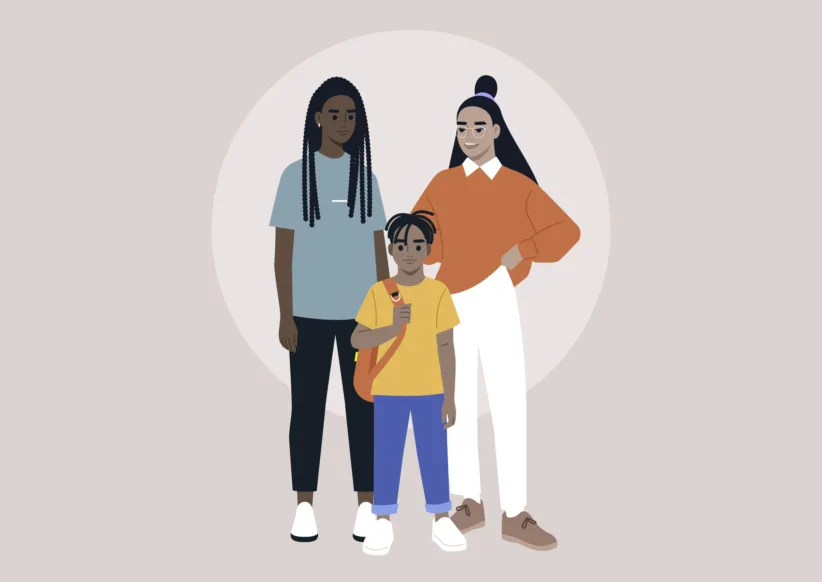[Note to readers: If you are pregnant, or if have an infant or toddler, there are many meaningful ways the New Parents Expo can help you on your journey into parenting and family, including hearing Dr. Bob Sears give a talk. The New Parents Expo is taking place on October 15 and 16 in NYC. Click here for more info and to register.]
My favorite part about being a pediatrician is
getting newborn babies into my practice. There’s nothing like those tiny,
squirming, grunting, eight-pound bundles of joy to brighten my day. I know that
I play an integral role in a young family’s life, and the decisions I make as a
baby’s doctor help ensure life-long health. So I want to be certain I am making
the right decisions and helping each family to make wise health care choices.
This includes being open-minded to new ideas and being humble enough to admit
that I didn’t learn everything I needed to in medical school.
To this end, I have shifted my approach to
include more holistic and natural treatments. That’s not to say that I’ve
thrown my medical textbooks out the window—far from it! Instead, I am learning
to evaluate natural treatment options that are scientifically valid, testing
them to determine their efficacy, and incorporating what works into my practice
for the betterment of my patients. And I am finding that more and more parents
are looking for pediatricians who do just that.
Here are five ways in which I have found that a
more natural approach may be better than writing a quick prescription.
1. Limit Antibiotics
I think that many pediatricians and family
doctors have gotten the message that antibiotic overuse is a problem. Here’s a
common story I experience when I see a new two-year-old in my office: first ear
infection at 4 months (antibiotic #1), sinus infection at 7 months (antibiotic
#2), ear infection at 12 months (antibiotic #3), persistent ear infection at 13
months (antibiotic #4, stronger this time), and bronchitis and sinus infection
at 18 months (antibiotic #5, strong again).
Now there’s nothing wrong with giving
antibiotics…when they are needed. But, many ear, sinus, and cough infections
don’t need antibiotics. They will either resolve over time without treatment or
can improve with some natural remedies. In fact, the American Academy of
Pediatrics’ policy on antibiotics states they should only be used for ear
infections that are severe at the onset or are moderate with fever and don’t
improve after two days. Of course, every illness requires good judgment on the
part of the parent and doctor. But antibiotics don’t always have to be the
answer.
Bacteria are everywhere, and our immune system
can handle them most of the time. A doctor can help parents decide when it’s
time to take an antibiotic, but in my practice I’ve stopped prescribing them
unless I think a child really needs them.
There are some effective natural remedies that I
routinely use. Mullein garlic oil ear drops help an ear feel better. The herbal
remedies Sinupret and Bronchipret can help with sinus and respiratory issues
(respectively). Taking Echinacea, Vitamin C and Zinc can help boost the immune
system during an illness.
2. Identify Food Allergies Early
I’ve seen undiagnosed food allergies wreak havoc
on kids. Any child who has chronic loose stools, skin rashes (like eczema), a
runny nose, or recurrent ear or sinus infections, may have food allergies and
deserves an evaluation. The two most common food allergens are cow’s milk
products and gluten. I can’t tell you how many chronically infected kids I’ve
seen get better simply by taking them off cow’s milk. Milk may do a body good,
but not when someone is allergic to it.
Gluten is more difficult to eliminate (it’s the
protein in wheat, oat, barley and rye), but it’s next on the list of possible
culprits. In my experience, it’s less common than cow’s milk as a cause of
chronic allergies. Allergy testing can be useful, but it can also miss these
food allergies. I usually advise parents to take their kids off cow’s milk
products first, then, if no changes occur within a month, go gluten-free as
well and see how a child does. If no better at that point, do allergy testing.
3. Keep The Colon Healthy
You’ve heard the saying, “If mom isn’t happy,
then nobody’s happy.” The same holds true for the intestinal system. The gut
contains much of the body’s immune system. So if the gut isn’t happy, a child’s
behavior and intellectual functioning can be affected, and he can be more
susceptible to illnesses and allergic problems.
One of the first questions I ask a parent when evaluating a child’s
development, behavior, allergies, or frequent illnesses is “What does your
child’s poop look like?” Children should have soft, formed stools one to three
times daily after they are weaned from breastfeeding. If the stools are loose
and messy, then I consider antibiotic overuse or food allergies as potential
problems. Probiotics and omega-3 supplements can help heal the gut and keep it
healthy.
Intestinal problems are so common among toddlers
that pediatricians have made up a term to describe it: “toddler diarrhea.” It’s
a label that doctors have made up to reassure parents that nothing’s really
wrong with the child. I disagree. Why should we ignore diarrhea just because it
is common? That’s like ignoring cavities because they are so prevalent. Many of
these kids can benefit from a trial off cow’s milk and taking probiotics. In my
opinion, ignoring this issue can increase a child’s risk of contracting more
illnesses and allergic problems down the road, not to mention behavioral
challenges. 
4. Fever Isn’t Always Bad
Fever is dangerous, right? It must be treated
before it causes a seizure or sends a child into a coma, right? Wrong. Fever is
just one of the many ways that the body fights infection. It means the immune
system is doing its job. The brain purposely raises the body temperature to
help activate the immune system and to stun viruses or bacteria that have
invaded.
In my practice, I advise parents to only treat a
fever when a child is fairly miserable from it. If a child has a temperature of
103, but is content to just lay low and sleep it off, then I say let it ride.
If a child has a fever of 101, but is crying and miserable, then maybe some
fever relief is warranted. I prefer using ibuprofen over acetaminophen; it has
a better safety profile.
5. Go Organic
Going green seems to be all the rage. But is it
really worth it? Yes. A baby’s brain is very susceptible to the negative
effects of chemicals, heavy metals and pesticides during the first three years
of life, as well as the first nine months in the womb. Eating organic foods
during pregnancy and breastfeeding, and giving a baby and young child organic
foods in the early years, helps grow healthier nervous, immune and hormonal
systems. Going green can cost more up front but the lifelong savings are worth
it.
For families who are on a budget (which is
virtually all of us), paying attention to the “dirty dozen” rule can be a good
way to save money. These 12 foods contain the highest level of pesticides and
should always be purchased organically: apples, celery, strawberries, peaches,
spinach, nectarines (imported), grapes (imported), sweet bell peppers,
potatoes, blueberries (domestic), lettuce, and kale/collard greens. The “clean
fifteen” foods have the lowest pesticide levels and buying non-organic is fine:
onions, sweet corn, pineapples, avocado, asparagus, sweet peas, mangoes,
eggplant, cantaloupe (domestic), kiwi, cabbage, watermelon, sweet potatoes,
grapefruit, and mushrooms.
Dr. Bob Sears is part of the Sears Family of
Pediatricians and an author in the Sears Parenting Library. Check out The Portable
Pediatrician: Everything You Need to Know About Your Child’s Health for more
information on mainstream and natural treatment and prevention of childhood
illnesses, along with a complete guide to your child’s pediatric checkups from
birth through the teen years.






















